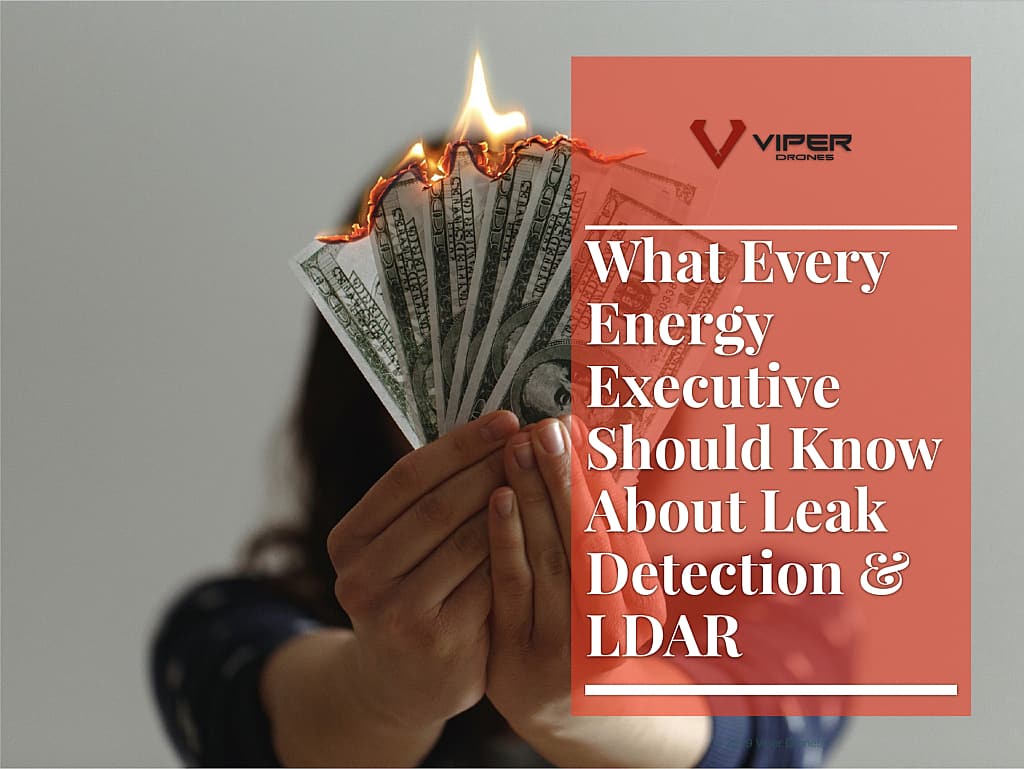If you were eating a sandwich in your living room, would you drop the wrapper in the middle of the room?
Probably not.
How about if you were walking on a street or in a secluded area?
Reasonable people might not, but many do.
An individual wrapper might not be noticeable, but over time, it piles up and becomes ugly and a hazard.
Gas leaks are like your wrapper. You certainly don’t want one in your living room.
You might not notice them in secluded spots.
But unaddressed, they pile up to become real problems for our environment.
If there was an easy way to reduce harmful gas leaks in the environment by 70%, wouldn’t you rush to implement it?
There is, and we have been telling everyone we know about it for years.
They are finally doing something about it.

- The good news for the environment
- Gas leaks in the Oil and Gas Sector
- The Methane Focus
- How regulations put the US Oil Industry in the lead…
- But ultimately got in the way
- The administration burden
- The Pareto Opportunity
- Our proposed solution leverages Pareto in gas leak detection
- It’s better, what is the problem?
- Good sense prevails
- How did I get into this?
- What next?
- Sources:
The good news for the environment
The US administration and environmental regulators finally embraced Pareto principles. They support a simple transformative gas leak detection method.
This week, the EPA announced $350 million in funding. It will support reducing Methane Emissions from the Oil and Gas Sector.1
More importantly, they gave the green light for a drone-enabled leak detection method. This method enables the quicker discovery of significant leaks (super emitters).
The US oil and gas industry could see a 70% reduction in harmful gas leaks.
If adopted worldwide, we could see a much higher reduction. Gas leak detection is not as good in other countries as in the USA.
This approach is a solution we have been advocating for years. It is simple and easily adopted.
That sounds interesting, but why is it such a big deal for the environment, and why is it transformative?
Gas leaks in the Oil and Gas Sector
Gas leaks are a significant problem for the Oil and Gas Sector.
No one has designed a process that does not leak.
And even if they did, leaks occur naturally in the environment.
They represent a safety risk.
They reduce profitability by losing valuable products.
And they do significant harm to the environment.
The Methane Focus
Methane is a harmful gas estimated to be 80 times worse for the environment than CO2. It does not last as long in the environment but traps more heat.2
Methane is one of the gases that leak in oil and gas operations. The oil and gas methane leaks are about 30% of the total to the environment each year.3
Methane has an outsized impact. The oil and gas industry has the potential for rapid reduction. Thus, the regulators want to focus on Methane in the oil and gas industry.
How regulations put the US Oil Industry in the lead…
The US EPA has been leading the world in addressing gas leaks in the oil and gas sector.
They were the first to propose Leak Detection and Repair (LDAR) methods. They introduced regulations to tackle the problem.
Many other oil-producing nations worldwide still need to embrace these approaches.
These methods led the USA to outperform its peers from an environmental standpoint. However, there was still massive room for improvement.
But ultimately got in the way
The problem was that the recommended practices were old and cumbersome.
Our understanding of the problem improved, as well as the technology that we can deploy.
We needed new and updated rules.
The EPA has studied sources of leaks. Statistically, they identified where leaks were occurring frequently.
They measured the probability of leaks occurring in various equipment. They could tell you how often to expect leaks in pumps, valves, and other oil and gas operation devices. Based on this information, the EPA recommended a statistics-based inspection process. They wrapped it into a comprehensive LDAR approach. At the heart of the inspection process is using Method 21 to identify leaks.
To comply, Method 21 requires an operator to use a Flame Induction Device (FID) to test for gas leaks. A company with an LDAR program would create inspection schedules for operators. With the handheld FID device, operators inspect millions of potential leaky candidates.
The result?
The system found more leaks than without LDAR. But, it was expensive and cumbersome, so operators surveyed devices infrequently.
Some companies introduced technological innovations to make the process more effective.
Operators could use a costly handheld optical gas imaging (OGI) camera. Like a camcorder, it helped them see leaks quicker and more safely. But, these were more expensive, and the operator still had to visit each device.
The best compliant oil and gas operators would only test their devices once a year. A leak could occur the day after an inspector checked a device. That leak would remain undiscovered until the following year when the operator returned.
That was the regulation. It was better than the rest. It worked.
But we saw tremendous room for improvement.
The administration burden
Over the years, we found that administrations approached the problem with different lenses. Political thinking and priorities often lead to unnecessary delays.
The Obama administration’s climate change agenda focused on Methane. Methane trapped more heat than CO2 and was dramatically more dangerous. They wanted rule changes.
A regulatory change requires significant scientific and financial evidence of the impact. It takes a long time. Regulators must invite Industry participants and the public to comment on new rules. The EPA must then carefully evaluate those comments.
The Obama EPA regulators spent years driving regulations explicitly targeting methane.
This retargeting was an unnecessary delay in our solution.
This change made no difference to our solution. We could identify Methane and a host of other gases. To us, all hazardous gas leaks represent a threat. Every large leak should be identified and repaired.
Operationally, our method would remain the same. We would look for large leaks independent of the gas. We could detect all the major gases, including Methane.
The debate and rule change slowed the transformation of gas leak detection.
Next, the Trump Administration takes over and promptly places all regulations on hold. Without clear direction, there was little incentive to adopt new ideas.
Then came the pandemic, which dramatically reduced investment, innovation, and adoption.
Many of our friends closed their businesses. We stayed resolute. Here is a piece I wrote back then: 9/11 Terror Killed My Startup Dream. Coronavirus will not
The new Biden Administration reversed the Trump executive orders in their first week. Sadly, they were also hostile to the oil and gas industry. Senior officials suggested the fossil fuel industry would have to die.
Despite the bumpy start and ugly hyperbole, good sense did eventually prevail.
We kept telling the transformative story during the regulatory detours.
The Pareto Opportunity
Gas leaks are unpredictable.
That’s why there have to be inspections.
No one knows when and where they will occur or how big they will be.
But, we have worked in transformation, strategy, operations, and quality improvements. We know about the Pareto principle.
In any series of elements to be controlled, a selected small fraction, in terms of numbers of elements, always accounts for a large fraction in terms of effect.
Vilfredo Pareto
The Pareto principle is commonly known as the 80/20 rule.
It states that roughly 80% of consequences for many outcomes come from 20% of causes.
In the oil and gas sectors, we expected the Pareto rule. We hypothesized that most gas leaked (by volume) would come from a few significant leaks. These we called super emitters.
Our proposed solution leverages Pareto in gas leak detection
Our solution? Equip a drone with a gas leak detection sensor. Survey oil and gas operations more frequently, looking for large leaks.
Drones provide an overview of an operation from a vantage point a human cannot match.
We had tested drones equipped with OGI and could find leaks. But, we could only find small leaks if we got close and flew so slowly that the drone advantage went away.
The drone solution cannot replace Method 21. It does not address the regulation that operators test all devices.
However, our drone solution is excellent at taking advantage of the Pareto principle.
We could fly a drone over an operation and look for more significant leaks, which are easily detected.
This process is much faster, less expensive, and safer. Operators can do weekly or monthly flyovers rather than the annual walk-around.
Large leaks found faster means dramatically lower total gas leaked.
Our friends in the industry used the solution to supplement their practices. They got the expected results. Compliance costs came down. They saved more products. Total gas leaked came down. There were fewer safety concerns.
It’s better, what is the problem?
The new approach is not just better.
The new approach trounces the traditional method.
So why has adoption been so slow?
The oil and gas industry is incredibly safety-oriented. It takes time to adopt new solutions.
The EPA regulations required Method 21. Few organizations would argue with the regulators.
Further, have you ever tried to sell new technology to a sector in an existential fight?
Oil and Gas industry executives believed the administration threatened their very survival.
Peter Drucker says, “There is nothing so useless as doing efficiently that which should not be done at all.”
Would you invest in new technology if your business was going away?
Good sense prevails
Earlier this year, the administration saw the light.
After years of pushing for new solutions, they embraced the Pareto principle. They recognized the importance of focusing on superemitters.
The administration put its weight and muscle behind drone-enabled solutions.
This week, they announced funding to support these initiatives.
These changes are good news for everyone:
- For regulators, it means better data and easier monitoring and compliance.
- The oil and gas industry complies at a lower total cost. Safety and profitability should increase.
- Drone Producers and Service Companies can pursue a well-funded and valued opportunity.
The best news for all of us? Adopting these new approaches could reduce environmental gas leaks by more than 70%.
For much more details on these announcements, see our article here: Good Sense Prevails: Administration Unleashes Drones To Fight Methan Leaks in Oil and Gas Operations

How did I get into this?
More than a decade ago, I ran several businesses in the Middle East. These included building mission-critical information solutions and fusing information from various sources. I became interested in the disruptive value of data acquired from drone platforms.
With my long-time friend Tom Mckeefery, we explored disruptive solutions.
Early on, we identified an opportunity for drones in agriculture in Southeast Asia. We supported a drone business there led by another friend, Bryce Mitchell. Bryce was using drones to disrupt agriculture. They would spray banana plantations using drones. Airplane spraying was suitable for large fields. But, it was not cost-effective for smaller fields. It is terrible for hilly locations. The manual approach was unsafe, expensive, and unreliable. The company saved small farmers a lot of money. The more uniform application of the drone approach increases crop yield. The better crops qualify for export standards and a significant price increase. Worker safety increased.
We learned a lot about drones’ disruptive power and scaling challenges.
It was time to move on and return to the United States. Tom and I decided to look for other disruptive opportunities. Agriculture in the United States was in a different state of evolution. , We did not see a similar disruptive opportunity there.
We were lucky to connect with two innovative entrepreneurs with some exciting ideas. Andy Beck and Rich Shannon had a successful partnership. They had decades of experience advocating for the adoption of thermal imaging. Their Viper Imaging business designs and installs solutions for industrial customers. They successfully paired a drone with the best-rated Optical Gas Imaging sensor. They tested it for gas leak detection, and it worked. They sold a few to customers.
Andy and Rich are not drone-focused and quickly decided they needed a partner. These early models were cumbersome and extremely difficult to fly. But we saw the potential in the solution. Our top-down Pareto hypothesis suggested a transformative opportunity.
We knew we could make the technology more reliable.
Our dear friend Asif Rahman, who is a technology marketing and product management Jedi crafted up a brilliant road map. He started us down a path of looking at smart integration partnerships. He showed us how valuable the solution would be to international markets, which were still in their infancy in this solution space.
Our friends Rick Krebs and Brad Nichols knew how to build and deploy technology. They were exceptionally talented with mission-critical technology. They quickly re-engineered an integrated solution. Our friend Eric Olsen wrote a new interface between the Drone and the Sensor.
We launched the first enterprise-level Drone-enabled leak detection solution in August 2019. We called it the Viper Vantage in August 2019. We documented our ideas about the new approach:
Original Blog: LEAK DETECTION – WHY EVERY ENERGY EXECUTIVE SHOULD KNOW THIS
Follow Up: WHY GAS LEAK DETECTION (LDAR) MUST CONTINUE TO BE A PRIORITY
We published a free eBook encouraging rethinking LDAR:

LDAR For Energy Executives
Why Energy Executives Should Know About Leak Detection
Gas leak detection is not just about compliance anymore! Some surprising technologies are upending the economics of leak detection and the impact on companies bottom-lines and the environment.
Get It Free On Apple BooksWe sold several installations to early-adopting industry pioneers. They quickly showed the benefit of the new approach.
But adoption was slow. The solution was not the problem. We advocated for an approach outside the then-existing regulatory framework.
We needed to become evangelists of the new approach and solution. But, as long as we were peddling our solution, our audience was skeptical. Maybe our rationale for the new Pareto-based approach was self-interested.
We stopped selling our proprietary solution. We decided as a team to stop selling. Our focus shifted to evangelism. We worked on convincing everyone we could talk to about the benefit of shifting the approach.
Today, that is still our focus.
What next?
We want to see the broad adoption of drone-enabled gas leak detection worldwide.
We will speak to anyone, share our data, and connect with anyone interested in moving forward.
Our friend Billy Nichols is a compliance expert. He pores over every significant regulation. He understands their impact and what is needed to comply. He has done much LDAR work, so he understands the issues practically. He spends his days developing processes for clients looking to become compliant quickly.
Bill Dohse, another friend, spends his time doing search and rescue drone services. During our slow period, Bill began inspecting solar operations. He saw the importance of securely handling massive amounts of data. He is working on technology that improves the management and analysis of field data. Some solutions applied to search and rescue or solar farms also work for gas detection.
Our industry expert friend David Cobb has been in oil and gas field development since he graduated as a petroleum engineer from Imperial College. He is spending a lot of his time educating folks in the industry on the challenges and opportunities of adopting new solutions.
Eric Olsen has partnered with several drone suppliers. He is helping them integrate gas leak detection sensors. The result is a broader selection of drone-enabled gas leak detection solutions.
Brad, Rick, Tom, and I still talk to everyone we meet. We see the incredible transformative value of adopting this disruptive approach.
We are happy to see the EPA and administration doing the right thing. It is great to see everyone getting behind this incredible solution.
Now, we highly recommend you get some funding and adopt!
Happy Holidays and good cheer!
Sources:
- https://www.epa.gov/newsreleases/biden-harris-administration-announces-350-million-14-states-reduce-methane-emissions ↩︎
- https://climate.mit.edu/ask-mit/why-do-we-compare-methane-carbon-dioxide-over-100-year-timeframe-are-we-underrating ↩︎
- https://www.whitehouse.gov/wp-content/uploads/2023/12/Methane-Action-Plan-2023-Topper.pdf ↩︎